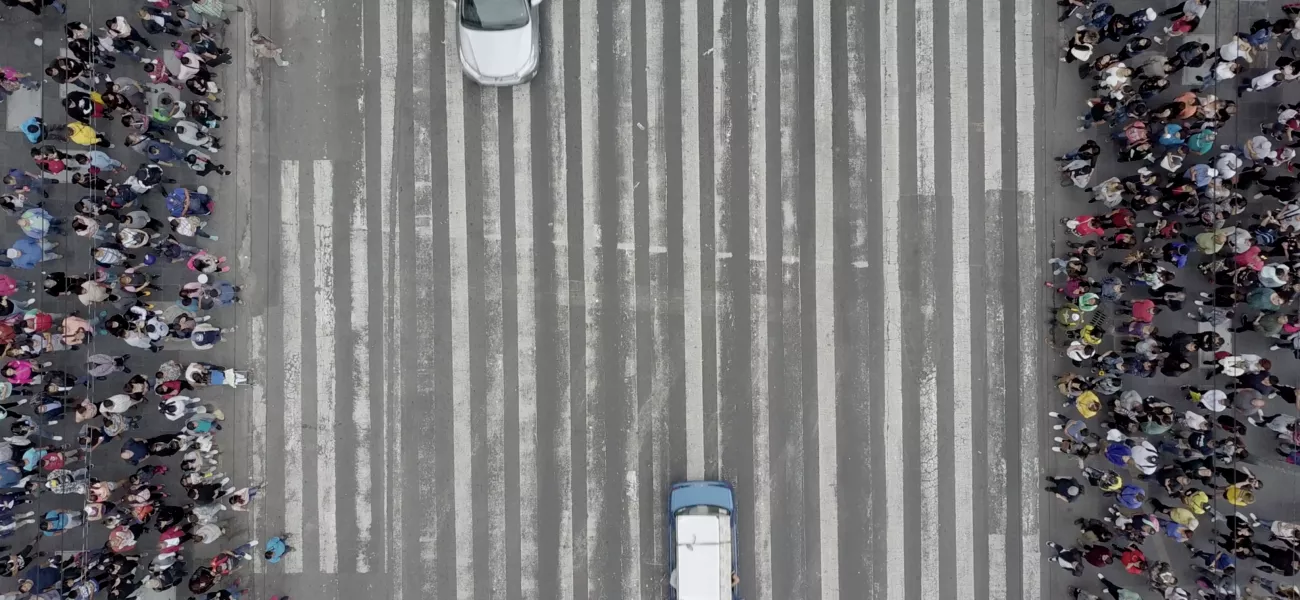
As the name suggests, panoramic cameras give a broader view of a scene from a single position than other types of surveillance camera. But this alone underplays their flexibility and value.
In environments where full coverage with no blind spots is essential, panoramic cameras represent the ideal solution. Without compromising on image quality, using a single camera in a situation where several static cameras would be needed can also be highly-cost effective.
A panoramic camera for every need
Panoramic cameras are far from a one-size-fits-all solution. A number of different types of panoramic camera have been developed which means that there’s a perfect model for any use case.
Single-sensor panoramic cameras. These cameras are perfectly suited for smaller indoor areas such as shops or lobbies. With a single sensor, the camera’s field of view will be determined by where it is mounted. For example, if mounted on a ceiling, these cameras provide a 360-degree view of the scene being monitored. They achieve this by using a fisheye lens and dewarping technology to deliver natural looking, undistorted images.
The broad overview combined with high-quality images allows you to identify and proactively respond to undesirable behavior such as shoplifting or aggressive behavior. Single-sensor panoramic cameras can also be mounted on walls, providing a 180-degree view at face level to support identification of suspects should an incident occur.
Multisensor panoramic cameras. These cameras feature of three or four sensors, which together deliver a 180-degree horizontal view and up to 90-degree vertically. This creates a wide angle, seamless image in much greater detail, even at longer distances, with minimal distortion and no blind spots. These cameras are ideal in environments such as busy town squares, parking lots and stadiums where there is a lot of movement in a wide area, creating security and safety challenges.
The better image quality at longer distances makes multisensor panoramic cameras extremely useful in situations where incidents can happen far away. Also, due to the multiple sensors, the functionality needed is contained within one camera, as opposed to many within the same area. The single camera only requires one license, one cable, and one IP address which can substantially lower costs. Further innovations in technology - including advanced camera performance, pan/tilt/roll motors, improvements in ease of installation, and perfectly seamless panoramic images – have resulted in a true panoramic multisensor experience.
Multidirectional panoramic cameras. In some multisensor cameras, the multiple sensors – either two or four camera heads - can be set to face different directions to gain maximum coverage of a scene. Each sensor provides a separate stream with an individual viewing angle. When spaced evenly the sensors can cover up to 360-degrees. However, they can also overlap each other, where one sensor might be used to provide a higher level of zoom on a particular area.
Multidirectional cameras are also available with pan, tilt, and zoom (PTZ) functionality, delivering the benefits of a constant 360-degree overview and the ability to zoom in on any area with a single clink in the video management software (VMS).
Multidirectional cameras are well suited for wide areas, both indoors and outdoors and can be mounted on walls or ceilings. They are particularly ideal for mounting on the outer corners of buildings, and at the intersections of hallways and roads, giving maximum coverage and allowing you to quickly spot and respond to any emerging security or safety issue.
Universal use cases for panoramic cameras
Panoramic cameras are use across all industries and environments, but a few stand out as having a lot in common.
Indoor applications in the areas of retail, business, and education are examples. Here multidirectional and fisheye panoramic cameras are the primary types used. Monitoring corridors, aisles, and bigger areas such as food courts in shopping malls can be achieved in an efficient and cost-effective way using multidirectional cameras. Entrances, lobbies, and more confined spaces such as a smaller shops can be covered without blind spots using single-sensor fisheye cameras.
Moving outdoors, in the areas of retail, transportation, and logistics - particularly warehouses - we find areas usually surrounded by a perimeter. When mounted directly on the main building structure, the area between the building and perimeter can be seamlessly covered by panoramic multisensor cameras in high detail.
Another perfect application for panoramic cameras is in city surveillance, and specifically areas such as parking lots, parks, or city squares that can easily be covered in great detail from a single installation point. And depending on whether an operator-driven surveillance setup is in place, you have the choice between multidirectional with PTZ or panoramic multisensor to capture the scene with high forensic detail for post-event investigations or situational awareness.
The best of all worlds
Traditionally, a choice needed to be made to either prioritize camera coverage on certain areas of interest, which would mean blind spots and potential loss of important forensic information outside of these areas, or increase the camera count, resulting in substantially higher system cost and complexity.
With panoramic cameras you get the best of both worlds – very high combined resolution loaded with forensic details, while reducing the cost and complexity of the system by using fewer cameras, cable drops and associated equipment.
